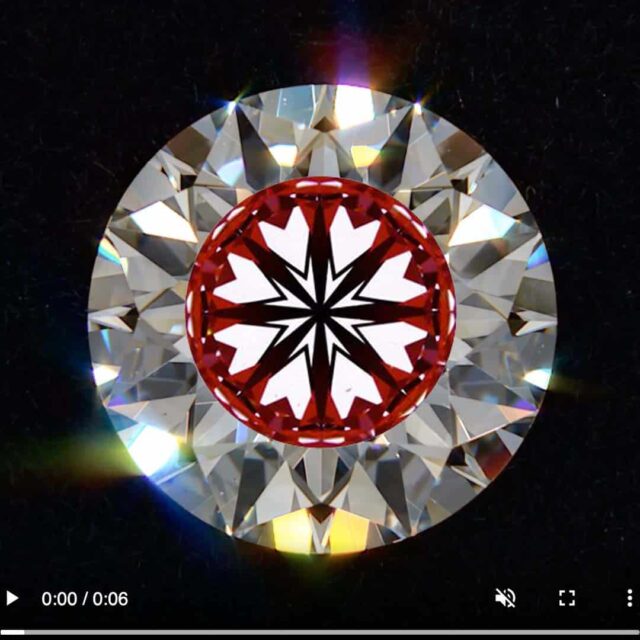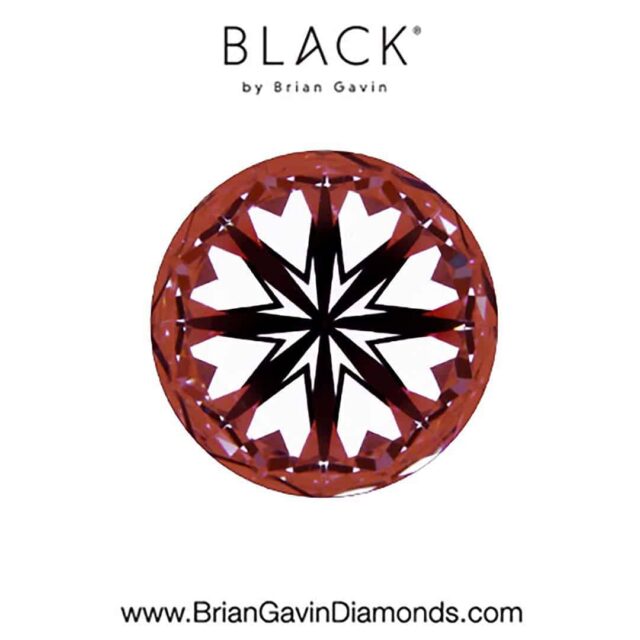"Hi Todd, I'm buying a diamond engagement ring and trying to determine what dictates brilliance. Based on your Brian Gavin review, I'm confident their diamonds are the best choice and am trying to pick the best of the three."
"I want the diamond to be bright and sparkly, and I’ve narrowed it down to three options, but I’m open to any others you feel are worthy of consideration."
"I'm leaning towards a 3-carat, H-color, SI-1 clarity, Brian Gavin Signature round diamond. However, I'm concerned about the SI1 clarity grade. I would also like to know whether the smaller options offer any benefit." -- Thomas S.
Does Clarity Affect a Diamond's Brilliance?
Diamond clarity is an identifying characteristic that has little effect on brilliance, which results from a combination of proportions and optical precision. However, clarity characteristics that are dark or dense in concentration may affect how light reflects throughout the diamond.
For this example, it's essential to recognize the difference between brilliance and brightness as it applies to light performance. The pavilion angle dictates the volume of light return, while the crown angle determines the balance of brilliance and dispersion.

Example of Brian Gavin SI1 Clarity Diamond.
Optical precision is the consistency of facet shape, size, and alignment from the perspective of 360 degrees. These factors' combination determines a diamond's overall performance potential, and the clarity characteristics are secondary.
Most inclusions within the 3-carat Brian Gavin Signature diamond are translucent and minuscule. As such, they aren't likely to interfere with how light travels through a diamond to the degree that it's detectable with the naked eye.
What Types of Inclusions Affect Diamond Brilliance?
Most inclusions have minimal effect on a diamond's sparkle factor, except for large black piques, extensive clouds, and twinning wisps. Pique is a European term for imperfect, and black refers to the color of the inclusions.
A "cloud" is a cluster of pinpoint-size crystals that may be light or dark in color. If a cloud is substantial in size, or there are many clouds within a diamond, they may affect the volume of light return in clarity grades lower than VS2.
In most cases, clouds look like specks of sparkling dust, like twinkling stars within the diamond, when viewed using 10x and higher magnification and are of no consequence.
Twinning wisps are usually only a concern if they cover a significant portion of the diamond or contain dark crystals trapped within the twisted crystal planes. Most of the time, twinning wisps are translucent, and the effect on diamond brilliance is immeasurable.
Beware the Statement "Clarity Grade Is Based Upon..."
We tend to look sideways at diamonds accompanied by lab reports that state the clarity grade is based on clouds or twinning wisps not shown on the plotting diagram. If you see either of those statements in the comments section of the report, it means that the clarity grade depends on those characteristics, but plotting them would make the plot look overbearing.
In that case, the inclusions likely will negatively impact the volume of light return, i.e., make it look dull or cloudy. This statement should not be confused with "Additional clouds not shown," which refers to the presence of clouds within the diamond that are too small to plot accurately.
Note that none of these factors are present within the three-carat diamonds you are considering. One of the benefits of working with a diamond dealer like Brian Gavin is that they have the diamonds in-house. Thus they can look at the diamonds and provide insight into the inclusions.
Which Brian Gavin Diamond Should You Buy?
If we look at the proportions of the three diamonds which you are considering:
We will see that all of the measurements are similar and well within the "sweet spot" or middle of the range designated for the ideal-cut proportions rating:
Carat Weight | Table | Total Depth | Crown° | Pavilion° | Girdle |
|---|---|---|---|---|---|
2.018 | 57.7% | 61.4% | 34.8° | 40.9° | N-M-F |
2.690 | 57.0% | 61.3% | 34.2° | 40.8° | N-SK-F |
3.018 | 55.1% | 61.9% | 34.9° | 40.9° | N-M-F |
Additionally, these diamonds exhibit exceptional optical precision, setting the stage for phenomenal performance. In that case, you'll see a virtual balance of brilliance, dispersion, and broad-spectrum sparkle.
How to Judge Diamond Optical Precision:
As stated, optical precision is the consistency of facet shape, size, and alignment from the perspective of 360 degrees. Any inconsistencies in the facet structure are evident in the light reflection pattern, as seen through a Hearts and Arrows Scope.
The white and colored sections on the scope create the contrast that enables us to identify specific reflection patterns. Refer to our Hearts and Arrows diamonds article for specifics on pattern generation and the subsequent benefits.
Most vendors don't provide hearts-pattern images of their round brilliant ideal-cut diamonds because doing so would reveal a lack of optical precision. Consequently, less than one percent of round brilliant cut diamonds exhibit the extraordinary optical precision necessary to achieve this level of performance.
Brian Gavin is one of the cutters who provides the images necessary to judge diamond light performance online. He also holds the patent for maximizing light performance in the modern round brilliant cut diamond.
Not surprisingly, the hearts' images for these three diamonds have near-perfect outlines with even spacing around the edges. Additionally, the shoulders are sufficiently round, the clefts are unbroken, and the tips are not bending in either direction, indicating a high degree of optical precision.
Playing Devil's Advocate
If the length of the pavilion facets were different, then each side of the hearts would be different lengths, creating a bend in the tip in one direction or the other. Additionally, any variation in the facet indexing creates uneven shoulders, split clefts, and uneven spacing around the hearts. It's like screwing on the lid of a jar and not threading it right from the beginning, and nothing lines up.
How to Use an ASET Scope Image:
ASET is an abbreviation for Angular Spectrum Evaluation Tool, a technology initially developed by the AGS Laboratory and currently owned by the GIA Gem Trade Laboratory.
The ASET Scope enables us to determine the direction a diamond gathers light from within the hemisphere and shows how evenly light reflects throughout the stone's facet structure.
Different colors on the scope color code the light, delineating specific angular spectrums as indicated in the ASET Scope image. Refer to our in-depth ASET Tutorial to learn what each color means.
In this case, the ASET reveals an even light distribution in the designated color for each spectrum. Therefore, purchasing one diamond over another is strictly a matter of personal preference.
How Do You Know Which Diamond Is Best?
It's strictly a matter of personal preference, given that the light performance and sparkle factor are equal. I'm also leaning towards the 3-carat because the difference in size is the most noticeable factor, given that the diamonds are all eye-clean.
There's satisfaction in saying, "It's three carats," when somebody asks how big it is (and somebody will always ask about a diamond of this size). This hand shot by Brian Gavin shows the relative size of popular diamond carat weights and provides a visual reference point.
It's essential to acknowledge that individual characteristics, such as vision, determine our ability to locate inclusions with and without 10x magnification. Standard industry practice dictates that a diamond is "eye-clean" if the inclusions are not readily and immediately visible from a distance of 9-12 inches when the grader glances at it.
In other words, the visibility of the inclusions varies depending on your eyesight and how carefully you scrutinize the diamond. Thus it might be possible for you to locate the inclusions within this diamond by examining it closely facet-by-facet.
It's unlikely that anybody will scrutinize the diamond that closely while admiring it on your fiance's hand. However, if you want to play it safe, the VS1 clarity options offer an excellent middle ground that balances carat weight, color, and clarity.
The slight difference in carat weight will not be discernable across the dinner table but might be visible while comparing the diamonds side-by-side. Similarly, unless you're highly color sensitive, the slight difference in hue and saturation will not be visible under standard lighting conditions.





